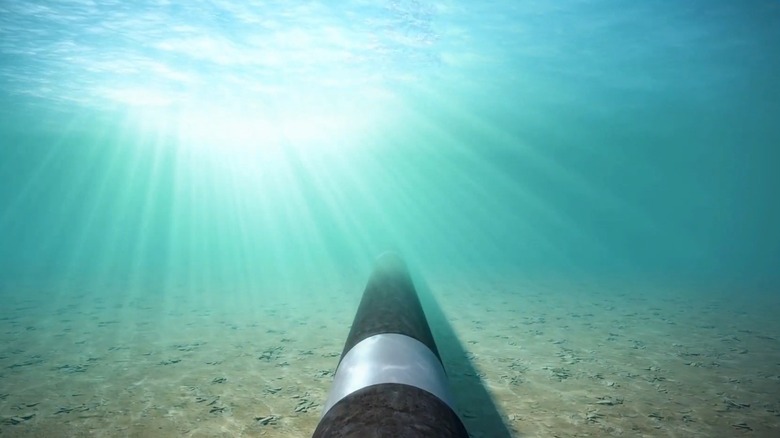Why Are The Cables Under The Red Sea So Important & What Happens If They Get Cut?
While you may be using a wireless option to get on the web, like T-Mobile's home internet utilizing the 5G cell network, the process of connecting the world online is still firmly hard-wired. For instance, according to Telegeography, more than 50% of several countries' bandwidth is derived from the many fiber-optic cables running along the bottom of the Red Sea, and more than 90% of the data between Europe and Asia also goes through these cables.
Should something happen that damages these critical components of the internet infrastructure, massive outages and delays can result. Such was the case in fall of 2025, when cloud services like Microsoft Azure, video conferencing, and trading platforms suddenly experienced noticeable latency in Asian as well as Middle Eastern regions, as reported by AP. Authorities suspect a large commercial ship must have snagged on and marred some submerged cables as it was attempting to anchor itself.
Fortunately, no country was entirely offline, as internet traffic could be rerouted via other cables. However, with certain parts of the world needing to essentially bypass data routes through the Red Sea, alternative cables were suddenly reaching increased levels of network congestion and causing significant slowdown.
Why latency on this scale is so detrimental
Slow internet is inconvenient, you might be thinking, but it can't be that bad, right? Actually, when these important submarine cables are damaged and the infrastructure suffers latency, it's more than just an exercise in patience, its impact has real consequences for markets and businesses. With so many entities running real-time transactions, platforms experiencing increasing delays cause not only a drop in productivity and sales, but also greater costs in terms of operations.
Imagine being a broker who suddenly has their internet lag, taking several more seconds than usual to confirm trades or even to see updated real-time market data. In terms of retailers, according to a study by Portent, a site that comes up within a second, achieves three times the customer conversion rate than one that loads in five seconds.
Employees within international corporations can also be greatly disrupted when the internet infrastructure suffers delays. Databases, transferring files, and video meeting's can come to a crawl as teams from different regions struggle to accomplish daily tasks.
How long does it take to fix a severed underwater cable and what can be done to mitigate the aftermath?
Several factors affect the length of a cable repair, and the process certainly isn't an easy one. First the precise location of the damaged section must be located, as these cables run the length of the Red Sea and beyond. A specially modified ship is then sent to the area, and depending on the depth, the cable can either be pulled up to the surface to be repaired on the ship or requires divers to go down to the sea floor and fix it onsite. This means that a full repair could take several weeks, creating an ongoing disruption for the effected parts of the world. These incidents can also affect scientists who plan to use fiber optic technology to detect earthquakes and tides via submarine cables.
Unfortunately, the events in the Red Sea in 2025 are hardly the only instance of damage to the cables. There was another incident in the Red Sea just a year prior in 2024, where three cables were broken causing connectivity problems between three continents. In the wake of these major interruptions to internet service, some are calling for better alternatives, as simply rerouting network traffic isn't viable. Businesses might benefit from being proactive in terms of more redundant systems such as backup data hosting services, and spread out data routes to help reduce dependency on notorious choke points like the Red Sea.


